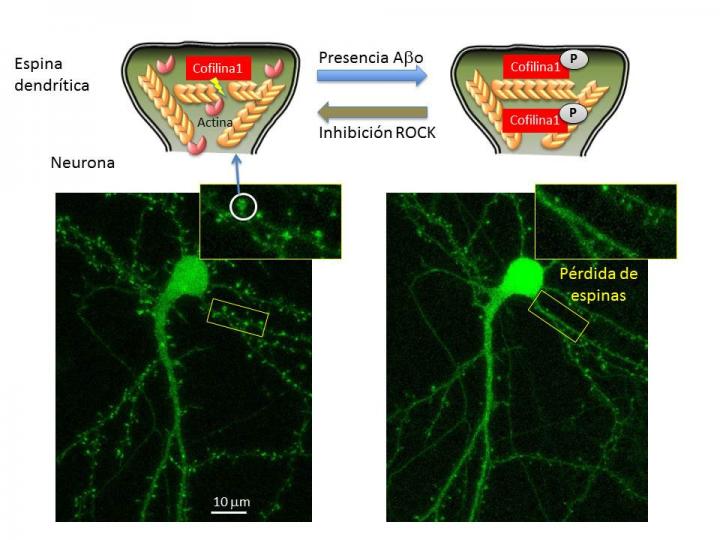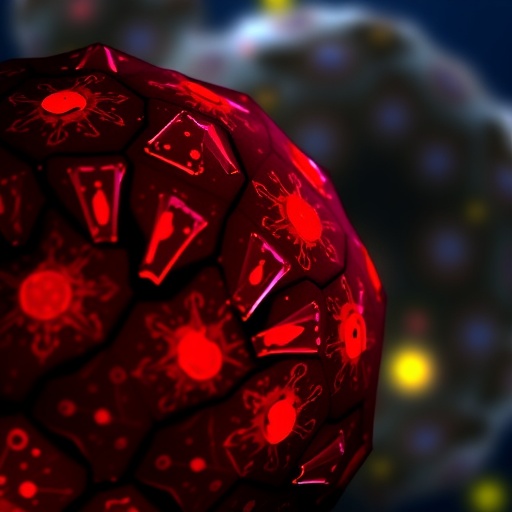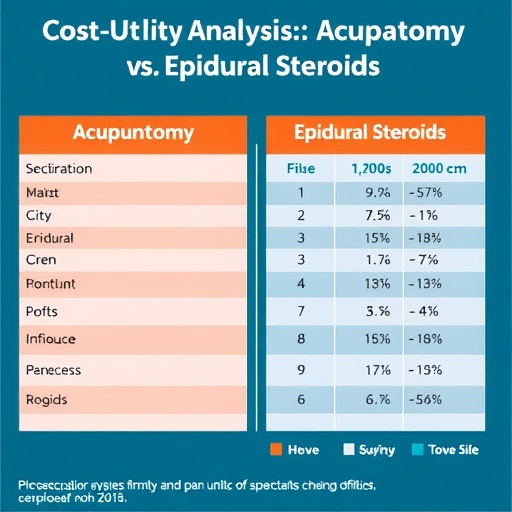A researcher at the UPV/EHU-University of the Basque Country has participated in the study into the impairment of the dynamics of spines that receive information from other neurons

Credit: José Martínez Hernández / UPV/EHU
José Martínez-Hernández, an Ikerbasque researcher in the Neuronal Ubiquitin Pathways group in the Department of Biochemistry and Molecular Biology of the UPV/EHU’s Faculty of Science and Technology, has participated in a study by the Grenoble Institut des Neurosciences which describes the relationship existing between the presence of beta amyloid peptides, known to be the components of the plaques that build up in the brains of people affected by Alzheimer’s, and the rapid fall in the dynamism of the actin cytoskeleton of the dendritic spines, the neural area responsible for receiving information coming from other neurons by means of nerve impulses. This reduced dynamics prevents information from being transmitted as it should, and this ultimately triggers the loss of spines and, therefore, the synaptic capacity of the neurons.
The cytoskeleton is a three-dimensional network of proteins that provides cells with internal support, organises their structures and intervenes in processes such as intracellular transport or traffic. One of the components of the cytoskeleton are the actin filaments which, as Dr Martínez describes, “are anchored but are constantly moving as if they were an escalator; a protein known as cofilin 1 undertakes to sever the filaments and separate the actin units, a task that keeps the dynamics active”.
However, if the cofilin 1 has become phosphorylated, in other words, if a phosphorous atom is added to it, this protein moves into an inactive state, it ceases to carry out its function and at the same time prevents neural activity from taking place correctly. “In our study we analysed samples from human brains with Alzheimer’s as well as animal models of this disease, and in them we saw that the inactive form of cofilin 1 is present in higher quantities than in healthy neurons.”
Relationship between beta amyloid peptides, phosphorylated cofilin 1 and the ROCK enzyme
In neuronal cultures they saw that exposure to beta amyloid peptides, the main component of the plaques or deposits that build up in the brains of individuals with Alzheimer’s, leads to an increase in phosphorylated cofilin 1, and therefore causes the actin filaments to become too stabilised; the latter lose dynamism and alter the functioning of the dendritic spines. “What is more, the beta amyloid peptides lead to fewer spines in the long term; when they cease to be functional, they are gradually lost over time,” highlighted the researcher.
One of the pathways of cofilin 1 phosphorylation is a kinase known as ROCK, a kind of enzyme that modifies other molecules by means of phosphorylation, sometimes activating them and other times deactivating them. In the study they wanted to see whether Fasudil, a drug used in clinical practice, the function of which is to inhibit the action of the ROCK enzyme, reversed the effect observed in the actin filaments and “we saw that it did. We have not come up with an action mechanism, but we confirmed that the inhibition of the phosphorylation pathway of cofilin 1 prevents exposure to beta amyloid peptides from causing the deactivation of the protein, and the consequent effect on the cytoskeleton of the dendritic spines,” said Martínez.
“Our results support the idea that the damage caused by the beta amyloid peptides on the level of the dendritic spines during the early stages of the disease may be prevented by modulating ROCK and cofilin 1, and that, therefore, research needs to be conducted into medications that specifically stop that phosphorylation of cof1 in neurons, so that future medical treatments to combat Alzheimer’s disease can be produced,” concluded Dr Martínez.
###
Bibliographical reference
Travis Rush, Jose Martinez-Hernandez, Marc Dollmeyer, Marie Lise Frandemiche, Eve Borel, Sylvie Boisseau, Muriel Jacquier-Sarlin, Alain Buisson
Synaptotoxicity in Alzheimer’s disease involved a dysregulation of actin cytoskeleton dynamics through cofilin 1 phosphorylation
Journal of Neuroscience (2018)
DOI: 10.1523/JNEUROSCI.1409-18.2018
Media Contact
Matxalen Sotillo
[email protected]
34-688-673-770
Original Source
https:/
Related Journal Article
http://dx.




